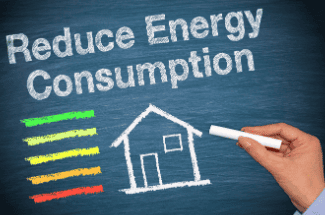Replacement Windows: Making Sense of U-Factors, Low E- Coatings, and Argon Jargon
Replacement Windows: Making Sense of U-Factors, Low E- Coatings, and Argon Jargon
Submitted by Louisa May
 Windows filled with argon gas are being advertised as the latest in energy efficiency, and in theory this technology should work.
Windows filled with argon gas are being advertised as the latest in energy efficiency, and in theory this technology should work.
When manufacturers fill the space between two panes of window glass with argon, the thermal insulation is increased by reducing the conductivity of the air space between the layers.
In a sealed glass unit filled with air, air currents carry heat to the top and cold air collects at the bottom. Filling the space with a slow moving gas minimizes the transfer of heat.
Argon is used for several reasons:
- It’s inexpensive,
- it’s an inert gas,
- and the most common noble gas on Earth.
It’s in the air we breathe- about 1 percent (.93%) to be more exact and argon is stable, resisting bonding with other gases. This is good, but will we significantly lower our energy bills if our windows are filled with it?
That’s the million dollar question, as at least one top brand window company is finding out. A class action suit was filed in 2007 against one corporation, stating that
- windows had lower concentration of inert gas than claimed, and
- the product’s dual seal did not prevent slow leaking.
Most manufacturers now agree that the gas does leak out over time, but say (with varying percentages) that it is not enough to lower the efficiency of the window system. What can a savvy consumer learn from the questions raised in this lawsuit?
Verify. When shopping for windows, make sure that manufacturers’ warranties and advertising claims can be verified.
The National Fenestration Rating Council is a non -profit organization. It is the only independent rating and labeling group that tests the energy performance of windows and doors. The NFRC rates the entire window performance including frame and spacer material. A sealed unit is just that. If it is poorly installed, or if cheap aluminum spacers are used, this is going to lower the overall efficiency of the window, whether it’s filled with argon or not.
This accounts for some of the discrepancies between a manufacturer’s claim of just the window’s efficiency and a more comprehensive NFRC rating. You’ll save time by reading NFRC labels, but you’ll need to understand the jargon of the industry first. Here’s a short list of terms you’ll encounter:
Low E- coatings: Low E stands for low emissivity, which is a measurement of how much heat a material radiates. The coatings are transparent metal oxides that reflect up to 90% of long wave heat energy while letting in visible light. A low E- coating does improve the insulating value of the window. There are different kinds of coatings available, and depending on where you live, some are better suited for heat gain, too. It makes a difference which side of the pane a coating is applied to, and which pane. Remember, the coatings are transparent, so ask questions.
U- Factor: The U- factor, or U- value measures the rate at which a window loses heat through a combination of conduction, convection, air leakage, and radiation. Read the labels carefully, since a label may refer to the glass or to the glazing. The lower the U- factor the better. A U-value is the inverse of an R- value which is how insulation is rated.
R- Factor: An R- factor measures the thermal resistance or how well something holds back heat. The higher the R-factor the better.
NFRC- The National Fenestration Rating Council label is on all Energy Star qualified window products.
Before making a final decision on your replacement windows, take a good look at the track record of the manufacturer. In disputes, a manufacturer, rightly of wrongly, often attributes low performance of a product to poor installation, so don’t cut corners on installation.
Remember, you can’t see energy loss, but by shopping smart, you can see lower energy bills.
Check out our Green Pages for information on money saving tips that help the environment.
American Apartment Owners Association offers discounts on products and services related to your commercial housing investment, including real estate forms, tenant debt collection, tenant background checks, insurance and financing. Find out more at www.joinaaoa.org.
To subscribe to our blog, click here.















 Accessibility
Accessibility